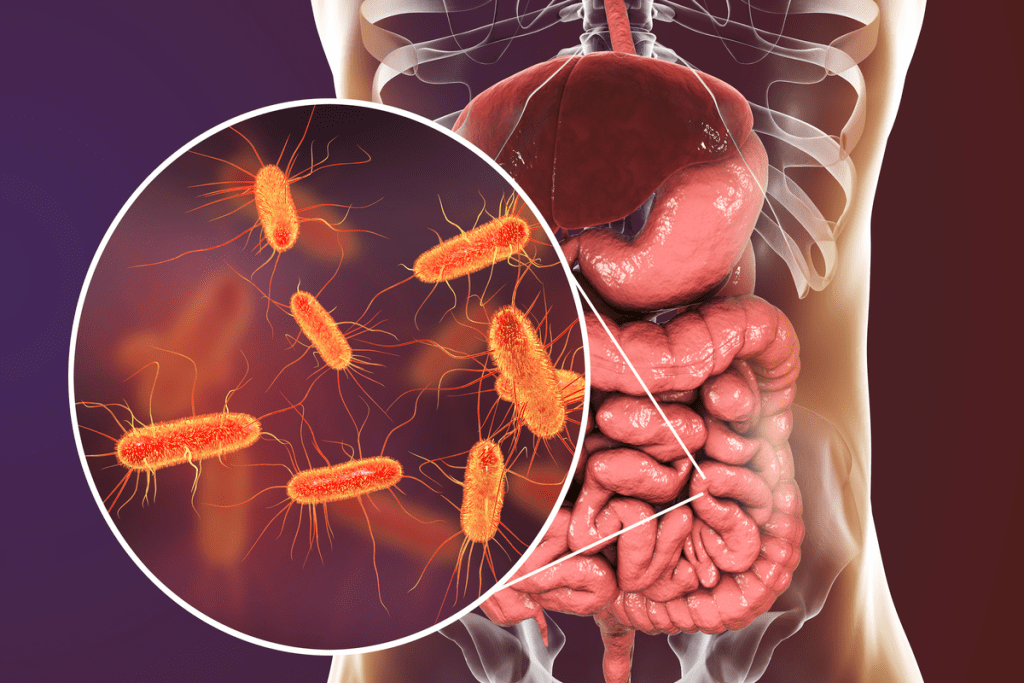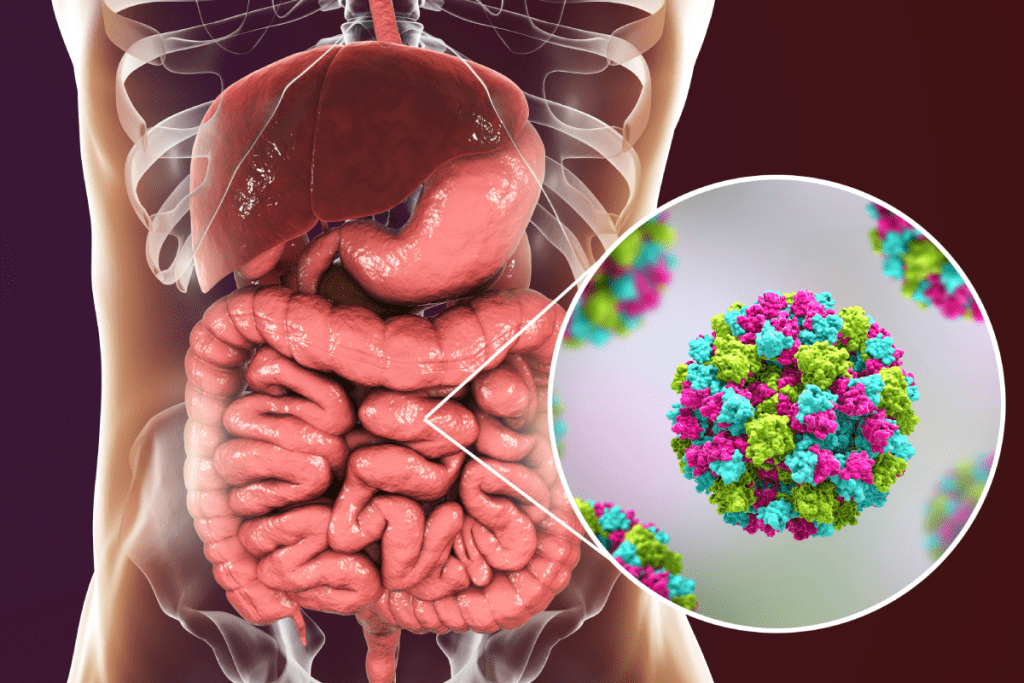Last Updated on November 14, 2025 by
As parents, we always want the best for our kids. At Liv Hospital, we know how worried you are about pediatric gastroenteritis. This condition affects millions of kids every year.
Pediatric gastroenteritis is a big problem worldwide, especially for kids under five.

The main reason for this illness is viruses. Rotavirus is the biggest culprit, causing over 60% of cases in young kids. Knowing what causes gastroenteritis in children helps us prevent and treat it better.

Diarrheal diseases are a big part of gastroenteritis. They cause a lot of sickness in kids and are a top reason for death in children under five. This is especially true in places with bad sanitation and water.
Gastroenteritis in kids means the stomach and intestines get inflamed. This leads to symptoms like diarrhea, vomiting, and belly pain.
Gastroenteritis is when the stomach and intestines get inflamed. It’s usually caused by viruses, bacteria, or parasites. It can lead to severe dehydration, imbalances in electrolytes, and even death, especially in young kids and those in poor areas. Childhood gastroenteritis causes vomiting, diarrhea, and dehydration. Early treatment of childhood gastroenteritis is vital to prevent serious complications and recovery delays
This condition is clinically significant because it needs quick diagnosis and treatment. Knowing about gastroenteritis helps doctors treat it well.
Gastroenteritis is a big problem worldwide, especially for kids under five. It’s one of the top reasons for death in this age group. Most of these deaths happen in countries that are not as wealthy.
The global burden of gastroenteritis is huge, with millions of kids getting sick every year. To help, we need to improve access to clean water, sanitation, and hygiene. We also need to make sure kids get vaccinated.
There are many things that make a child more likely to get gastroenteritis. These include bad sanitation, no clean water, being malnourished, and not breastfeeding enough. Kids under five, those with weak immune systems, and people in poor areas are especially at risk.
Knowing these risk factors helps us find ways to stop and treat gastroenteritis. By focusing on these areas, we can lower the number of kids getting sick and the harm it causes.
Viral infections are the main reason for gastroenteritis in kids all over the world. These infections greatly affect children’s health, especially in places where healthcare is hard to get.
The rotavirus vaccine has changed how we deal with gastroenteritis in kids. Rotavirus used to be the top cause of severe stomach problems in kids under five. But, thanks to the vaccine, cases of rotavirus have dropped a lot.
Before the vaccine, rotavirus was the main cause of severe stomach issues in kids everywhere. Almost every child got rotavirus by age five. It led to many hospital stays and deaths from dehydration.
The rotavirus vaccine has been a big help. It has lowered the number of hospital visits and deaths from rotavirus, especially in places with good vaccine coverage.

After rotavirus vaccines became common, norovirus became the top cause of stomach problems in rich countries. It mainly affects babies and toddlers. Norovirus spreads easily and can cause big outbreaks in schools and hospitals.
Norovirus causes symptoms like vomiting and diarrhea to start suddenly. This can lead to dehydration if not treated right away. It’s very important to know the signs of norovirus in young kids because they can get very dehydrated.
Other viruses like adenovirus, astrovirus, and calicivirus also play a part in stomach problems in kids. These viruses can cause mild to severe symptoms.
It’s key to know about these viruses to find better ways to prevent and treat stomach problems in kids. We keep watching how these viruses spread to help improve health for kids with gastroenteritis.
Viral infections are the main cause of gastroenteritis in kids. But, bacterial and parasitic infections also play a big role. Knowing about these causes helps us find better treatments and manage the disease.
Bacteria cause about 10-20% of gastroenteritis cases in children. Escherichia coli (E. coli), Salmonella, and Shigella are common culprits. These bugs can make kids very sick with diarrhea, stomach pain, and throwing up.
Parasites cause less than 5% of gastroenteritis in kids. Giardia lamblia is a big one, often from bad water or touching someone sick. Other parasites like Cryptosporidium can also make kids sick, especially if they’re not healthy.
It’s key for doctors to know about bacterial and parasitic infections in gastroenteritis. This way, we can treat it right and stop it from happening in the first place.
It’s key to spot gastroenteritis symptoms in kids early. The signs can change with age. Knowing these differences helps doctors treat them right.
Symptoms of gastroenteritis vary by age. Infants might seem tired, not want to eat, and show signs of dehydration like fewer wet diapers. Toddlers often vomit, have diarrhea, and feel pain in their belly. They might also have a fever. Older kids show symptoms like adults, like diarrhea and belly pain.
Knowing the signs of severe gastroenteritis is crucial. Look out for:
If you see these signs, get medical help right away.
Gastroenteritis can cause serious problems if not treated quickly. These include:
Knowing these risks shows why it’s so important to treat gastroenteritis fast in kids.
Understanding how to diagnose and treat pediatric gastroenteritis is key for healthcare providers. At Liv Hospital, we aim to use the latest international protocols. Our goal is to provide top-notch, ethical care to children.
To diagnose pediatric gastroenteritis, we do a thorough clinical assessment. This includes looking at the child’s medical history and doing a physical exam. We also use stool tests to find out what’s causing the illness.
According to the American Academy of Family Physicians, stool tests are recommended for kids with severe symptoms or weakened immune systems.
We also check for dehydration signs like dry mouth and sunken eyes. This helps us decide the best treatment plan.
Treatment for pediatric gastroenteritis includes rehydration and nutritional support. Oral rehydration solutions (ORS) are key for mild to moderate dehydration. For severe cases, we might use intravenous fluids.
Nutritional support is also important. We suggest a normal diet, avoiding foods high in sugar and fat. This helps reduce symptoms.
Severe cases of gastroenteritis may need hospital care. We provide intravenous hydration and watch for complications. Our goal is to manage dehydration and prevent further issues.
Our hospital care also includes supportive care to manage symptoms and prevent complications. By using evidence-based treatments, we ensure children get the best care for gastroenteritis.
Stopping gastroenteritis in kids is key to reducing its effects. We can do this with good prevention plans and public health efforts. At Liv Hospital, we lead in preventing and treating gastroenteritis. We use new ideas and proven methods.
Vaccines are very important in stopping gastroenteritis, especially against rotavirus. This virus is a big cause of stomach problems in kids. Keeping things clean and practicing good hygiene also helps stop the spread of germs. These steps can greatly lower the number of cases in children.
Public health programs that teach and inform are very helpful. They help parents and caregivers protect their kids. We support these efforts and work to make sure kids get the care they need. By doing this, we can really help prevent gastroenteritis in kids and improve health for everyone.
Infants with gastroenteritis may have diarrhea and vomiting. They might also have fever and seem irritable. Signs of dehydration include fewer wet diapers, dry mouth, and sunken eyes.
Doctors diagnose it by looking at symptoms, medical history, and doing a physical exam. They might also do stool tests to find out what’s causing it.
Complications can include dehydration and electrolyte imbalance. In severe cases, it can lead to shock or even death. It can also cause malnutrition and long-term stomach problems if not treated right.
Treatment aims to rehydrate and manage symptoms. Oral rehydration solutions are often used. In severe cases, hospital care is needed for intravenous fluids and close monitoring.
Yes, prevention is possible. Good hygiene, like washing hands often, is key. Safe drinking water and rotavirus vaccines help too. Proper food handling and storage also play a role.
Poor sanitation and lack of clean water increase risk. Malnutrition and crowded places, like daycare, also raise it. Young children, especially those under five, are most at risk.
Manage symptoms by keeping them hydrated and offering a bland diet after vomiting stops. Watch for dehydration signs and rest. Good hygiene is also crucial.
Here are authentic references related to the most common cause of pediatric gastroenteritis, including causative agents, clinical features, and management, formatted in APA style:
Subscribe to our e-newsletter to stay informed about the latest innovations in the world of health and exclusive offers!